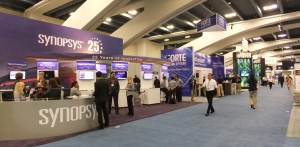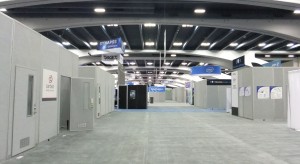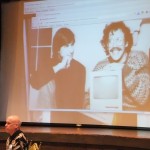
There’s a new trend at trade shows, and it really creeps me out. I call it The Silent Street: a long stretch of pre-fabricated meeting rooms, parallel to the main aisle of booths. It’s just like the back alley: so close in space to the fancy street out front, but so far in look and feel.
The pre-fab meeting room has become a popular trade show booth option. The really big vendors will often incorporate a meeting room into the main booth structure, but smaller booths can rent a pre-fab: all you have to do is walk around the corner to the Silent Street to use it. The rooms are roofless, carpeted not just wall-to-wall but also floor-to-ceiling, and have only one tiny window on the locked door. The carpeted wall panels muffle the hubbub from the main aisle so that you feel much farther away from the action than you really are.

No one walks down the Silent Street except to go into a meeting room, so it’s both quiet and deserted. Obviously the rooms are useful—for some even necessary—but the marketing department must hate them: you’re taking customers away from the carefully crafted buzz of a show floor and walking them into a quiet, undecorated locked room.
To me, the Street was strange enough that I remembered a passage from Arthur C. Clarke’s Rendezvous With Rama, where astronauts explore an alien spaceship and walk through silent “cities” consisting of featureless cubical buildings.




